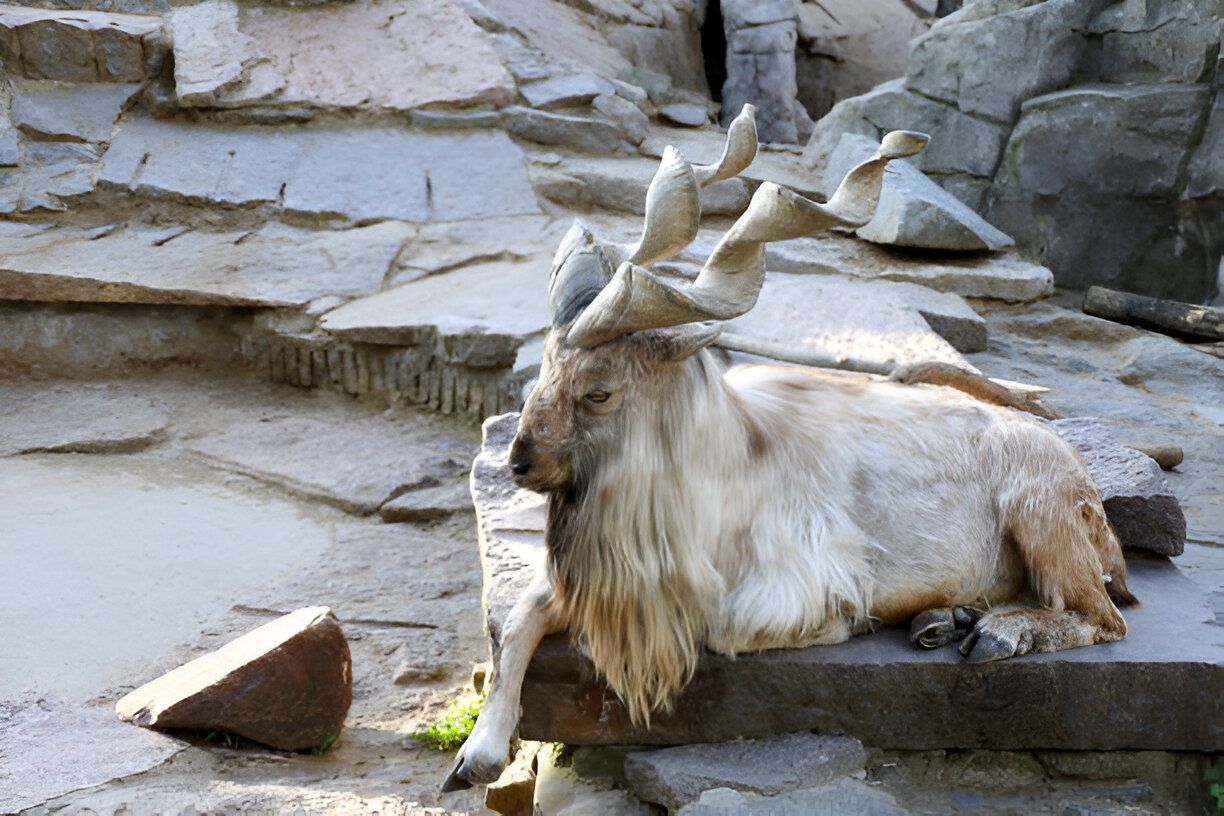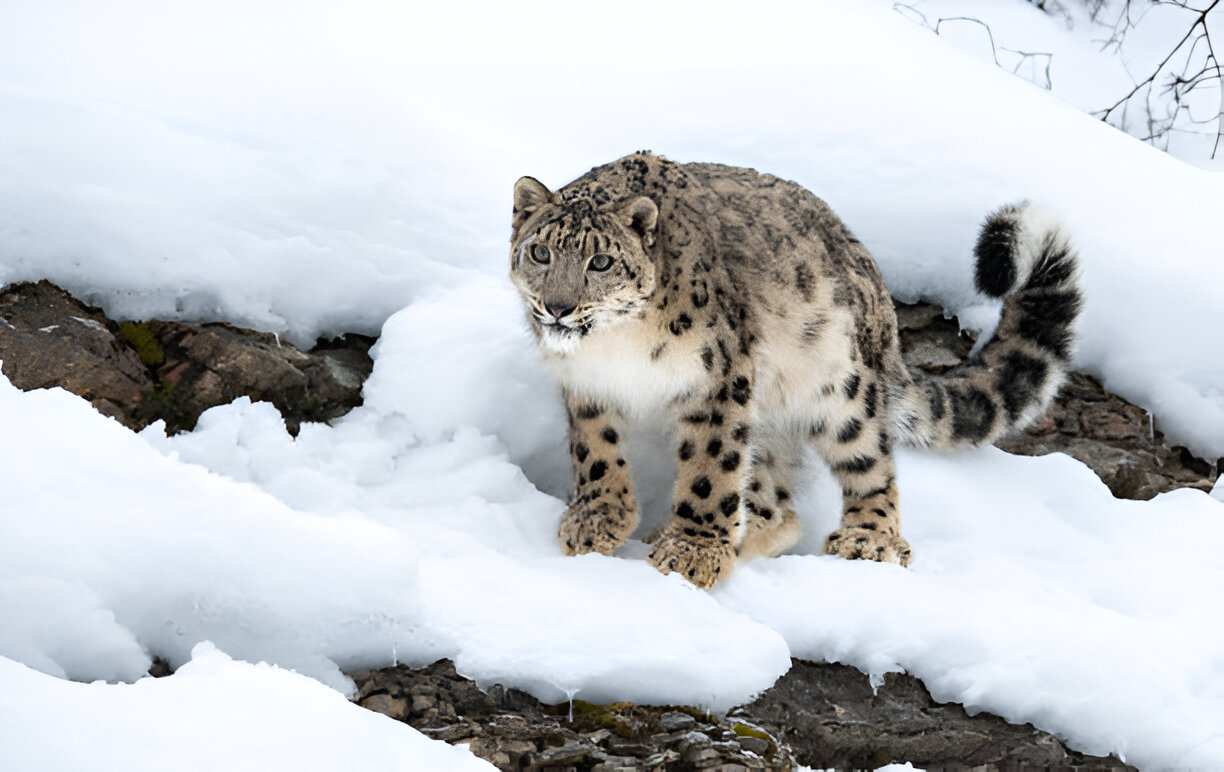
Pakistan is home to some of the world’s most diverse landscapes – from soaring peaks in the Karakoram to vast deserts, lush forests, and coastal areas. Within these diverse ecosystems thrives a rich variety of wildlife, making Pakistan a haven for nature enthusiasts and wildlife photographers. From the iconic Markhor to the elusive Snow Leopard, the wildlife of Pakistan is both unique and awe-inspiring.
In this guide, we’ll explore the incredible fauna of Pakistan, the habitats they call home, and the conservation efforts being made to protect them.
Table of Contents
Toggle1. Markhor – The National Animal of Pakistan
The Markhor, with its majestic spiral horns, is Pakistan’s national animal and a true symbol of resilience. Found in the rugged mountains of Gilgit-Baltistan, Chitral, and northern Khyber Pakhtunkhwa, the Markhor is a sight to behold.
- Scientific name: Capra falconeri
- Habitat: Alpine cliffs and scrub forests at altitudes between 600–3,600 meters
- Conservation status: Near Threatened
Thanks to conservation efforts and controlled trophy hunting programs, the Markhor population has shown signs of recovery in recent years.

2. Snow Leopard – The Ghost of the Mountains
Elusive, graceful, and mysterious, the Snow Leopard is one of Pakistan’s most iconic yet rarely seen species. Known as the “ghost of the mountains,” it inhabits the high-altitude ranges of Gilgit-Baltistan, including Khunjerab National Park.
- Scientific name: Panthera uncia
- Habitat: High mountains between 3,000–5,500 meters
- Conservation status: Vulnerable
The Snow Leopard is vital for the ecosystem as it keeps prey populations in check. Organizations like the Snow Leopard Foundation in Pakistan are working hard to conserve this magnificent predator.

3. Indus River Dolphin – Pakistan’s Blind Dolphin
The Indus River Dolphin is among the rarest freshwater dolphins in the world, found only in the Indus River system. Locally known as Bhulan, this dolphin is nearly blind and relies on echolocation to navigate.
- Scientific name: Platanista gangetica minor
- Habitat: Lower and middle stretches of the Indus River
- Conservation status: Endangered
Conservation initiatives have saved this species from extinction, but pollution and water diversion remain major threats.
4. Himalayan Brown Bear
The Himalayan Brown Bear is the largest carnivore in the northern regions of Pakistan. Found in Deosai National Park, these bears are a symbol of wilderness in one of the world’s highest plateaus.
- Scientific name: Ursus arctos isabellinus
- Habitat: Alpine meadows and valleys of Gilgit-Baltistan
- Conservation status: Critically Endangered in Pakistan
Deosai National Park plays a critical role in protecting this rare species.
5. Birds of Pakistan – A Birdwatcher’s Paradise
Pakistan is home to over 660 species of birds, making it a paradise for birdwatchers. From the colorful Himalayan Monal in the north to the migratory Siberian Cranes visiting wetlands, bird diversity is immense.
- Popular species include:
- Himalayan Monal
- Peregrine Falcon
- White-headed Duck
- Houbara Bustard
Wetlands like Haleji Lake and Uchhali Complex serve as key stopovers for migratory birds.
6. Reptiles and Other Wildlife
Pakistan’s deserts and plains are home to fascinating reptiles such as the Monitor Lizard, Sand Cobra, and the Indian Rock Python. The coastal areas of Sindh and Balochistan are nesting grounds for endangered sea turtles like the Green Turtle and Olive Ridley Turtle.
7. Conservation Challenges and Efforts
While Pakistan boasts rich biodiversity, its wildlife faces threats from:
- Habitat loss
- Deforestation
- Poaching
- Climate change
Thankfully, conservation programs like the Protected Areas Initiative, Snow Leopard Foundation, and community-based trophy hunting projects are helping restore balance to ecosystems and protect endangered species.
The wildlife of Pakistan is as diverse as its landscapes. From the Markhor scaling cliffs to the Snow Leopard prowling icy ridges, every species contributes to the natural heritage of the country. For travelers, conservationists, and nature lovers, Pakistan offers an opportunity to witness rare and magnificent creatures in their natural habitats.
Protecting this heritage is vital—not just for Pakistan but for the global environment.
